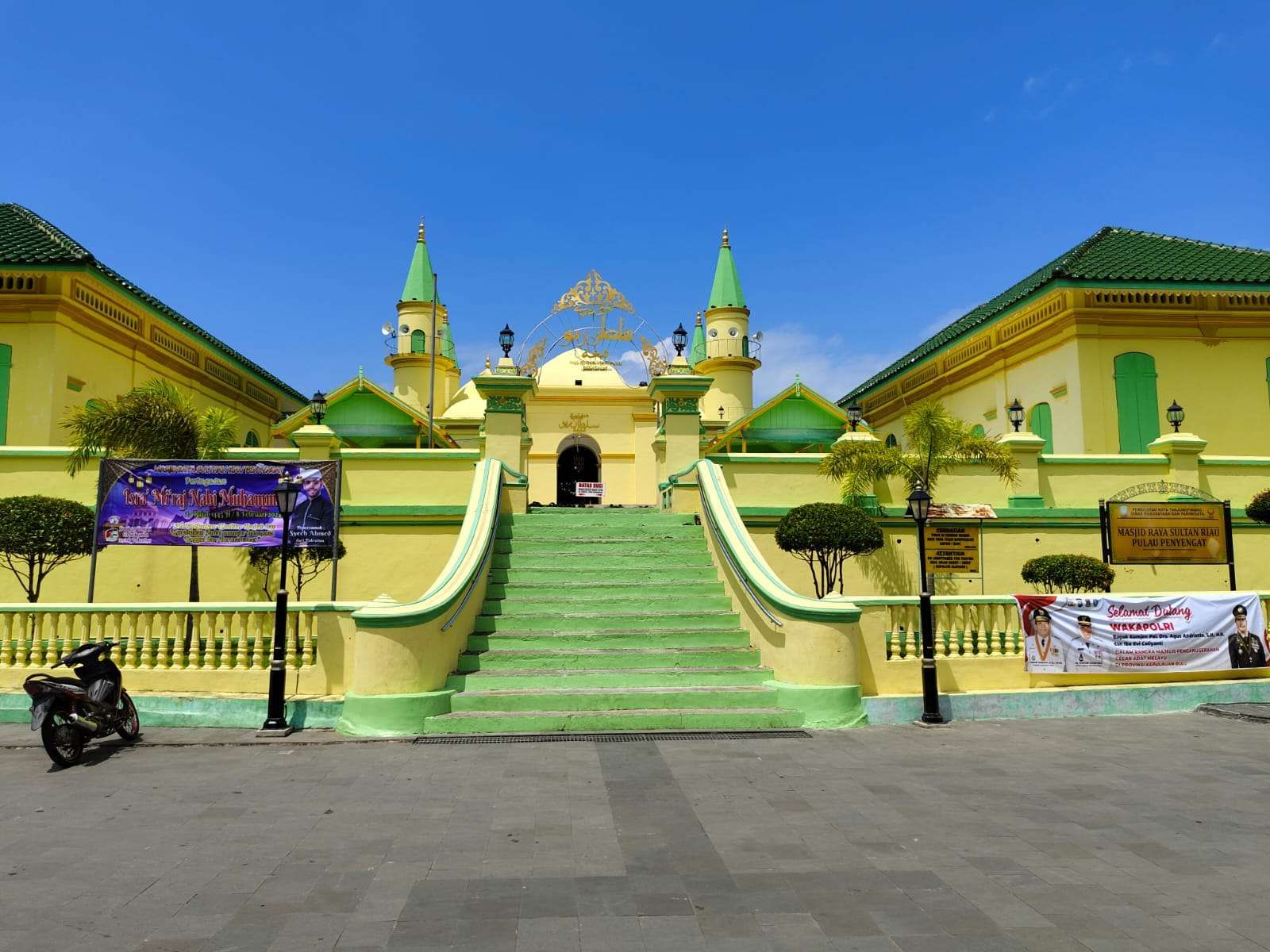
Istana Kantor Pulau Penyengat: A Throne of Power and Administration
Istana Kantor Pulau Penyengat: A Throne of Power and Administration
Nestled amidst the verdant embrace of Pulau Penyengat, an island steeped in history and culture off the coast of Tanjungpinang, Indonesia, stands Istana Kantor, a testament to power, administration, and the enduring legacy of the Riau Sultanate. This grand structure, once the residence and administrative center of Raja Ali, the eighth Yang Dipertuan Muda of Riau, stands as a captivating landmark, whispering tales of a bygone era.
A Symbol of Authority and Governance
Constructed in 1855, Istana Kantor epitomized the authority and governance of Raja Ali during his reign. The palace’s imposing presence on the island’s central hill served as a visible reminder of the sultan’s power and his commitment to upholding the sultanate’s traditions. Its grand architecture, incorporating Malay and European design elements, showcased the sultan’s cultural affluence and his engagement with the wider world.
A Residence and Administrative Hub
Beyond its symbolic significance, Istana Kantor served as both a residence and an administrative hub for Raja Ali. The palace’s spacious interiors provided ample living quarters for the sultan and his family, while its formal halls and reception rooms accommodated official gatherings, administrative functions, and diplomatic meetings.
A Blend of Architectural Styles
Istana Kantor’s design reflects a harmonious blend of Malay and European architectural styles. The palace’s symmetrical layout, with its central courtyard and flanking pavilions, is reminiscent of traditional Malay architecture. However, the incorporation of European elements, such as the use of brick and tile roofing, adds a touch of modernity and sophistication.
A Glimpse into the Past
Today, Istana Kantor stands as a captivating landmark, offering visitors a glimpse into the administrative and political life of the Riau Sultanate during Raja Ali’s reign. While the palace’s original grandeur has faded with time, its remnants still evoke a sense of the opulence and sophistication that once characterized the sultanate’s court.
Preserving a Legacy
Recognizing its historical and cultural significance, the Indonesian government designated Istana Kantor as a cultural heritage site in 2014. This designation underscores the palace’s importance in preserving the memory of the Riau Sultanate’s administrative legacy and ensuring its preservation for future generations.
A Destination for Historical Exploration
Istana Kantor beckons visitors seeking to explore the rich history and culture of Pulau Penyengat. Wandering through the palace’s remnants, one can imagine the bustling activities of the past, the sultan holding court, dignitaries visiting, and the daily life of the palace’s inhabitants.
Conclusion
Istana Kantor stands as a captivating symbol of the Riau Sultanate’s administrative legacy. Its blend of Malay and European design elements, its former role as a residence and administrative center, and its current status as a cultural heritage site make it a must-visit destination for those seeking to delve into the island’s rich past. As visitors explore this historical treasure, they embark on a journey through time, connecting with the stories and traditions that shaped the Riau Sultanate’s administrative practices and the enduring legacy of Raja Ali’s reign.





Leave your comment